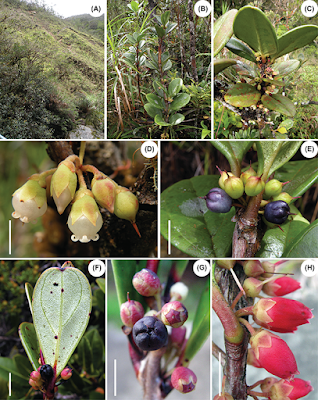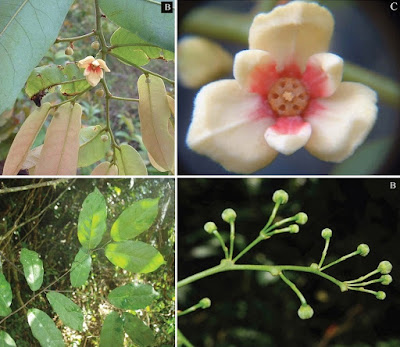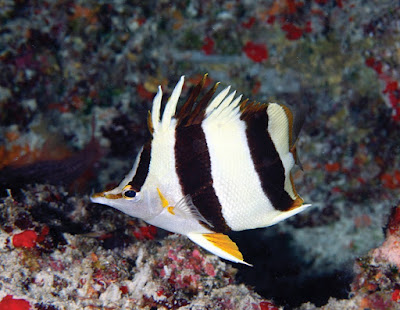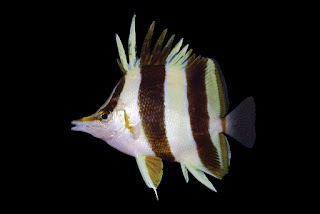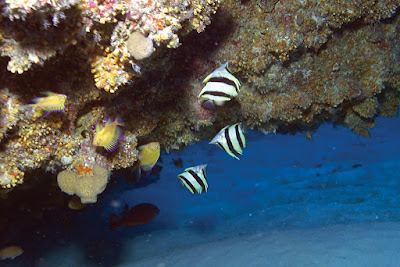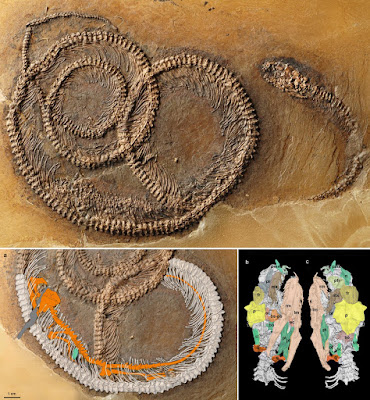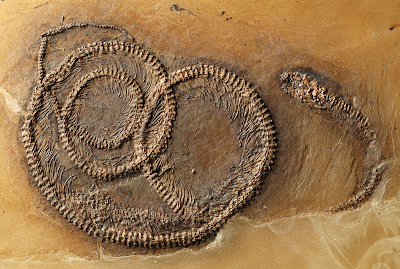[Most Recent Entries] [Calendar View]
Sunday, September 11th, 2016
| Time | Event | ||||||||
| 7:37a | [Botany • 2016] Diplycosia rigidifolia sp. nov. (Ericaceae) from Mount Kinabalu, Borneo, Sabah, Malaysia
Abstract Diplycosia rigidifolia sp. nov. from Mount Kinabalu, Borneo, Sabah, Malaysia, is described and illustrated. This species is similar to D. urceolata, but differs by its shorter petiole, thicker, strictly elliptic leaf blades, longer pedicels, calyx lobes with sharply acuminate apex, and larger purplish black fruiting calyx. The species is known only from Mt Kinabalu in northern Sabah state, Malaysia. Peter W. Fritsch and Catherine M. Bush. 2016. Diplycosia rigidifolia sp. nov. (Ericaceae) from Borneo, Sabah, Malaysia. Nordic Journal of Botany. DOI: 10.1111/njb.01245 | ||||||||
| 8:01a | [Botany • 2016] A Nonet of Novel Species of Monanthotaxis (Annonaceae) from around Africa
Abstract As part of an ongoing revision of the genus Monanthotaxis Baill. (Annonaceae), nine new species are described and one variety is reinstated to species rank. Two new species from West Africa (Monanthotaxis aquila P.H.Hoekstra, sp. nov. and Monanthotaxis atewensis P.H.Hoekstra, sp. nov.), four new species from Central Africa (Monanthotaxis couvreurii P.H.Hoekstra, sp. nov., Monanthotaxis latistamina P.H.Hoekstra, sp. nov., Monanthotaxis tripetala P.H.Hoekstra, sp. nov. and Monanthotaxis zenkeri P.H.Hoekstra, sp. nov.), one new species from Tanzania (Monanthotaxis filipes P.H.Hoekstra, sp. nov.), one new species from the area around Maputo (Monanthotaxis maputensis P.H.Hoekstra, sp. nov.), one new species from the Comoro Islands (Monanthotaxis komorensis P.H.Hoekstra, sp. nov.) and Monanthotaxis klainei (Engl.) Verdc. var. angustifolia (Boutique) Verdc. is raised to species level leading to the replacement name Monanthotaxis atopostema P.H.Hoekstra, nom. nov. (not Monanthotaxis angustifolia (Exell) Verdc.). Complete descriptions, comparisons with related species, ecological information and IUCN conservation assessments are given for the new species. Five species were classified as critical endangered, two species as endangered, one as vulnerable and one as least concern, warranting the need of further collecting and studying those species. Keywords: Monanthotaxis, Annonaceae, Africa, Gilbertiella, new species, Mayotte, Comoros, Gabon, Cameroon, Tanzania, Mozambique, Ivory Coast, Ghana, South Africa, Republic of Congo, Atewa Range, Ottotomo, Rondo Paul H. Hoekstra, Jan J. Wieringa and Lars W. Chatrou. 2016. A Nonet of Novel Species of Monanthotaxis (Annonaceae) from around Africa. PhytoKeys. 69: 71-103. DOI: 10.3897/phytokeys.69.9292 A nonet of new plant species from Africa emphasizes the importance of he... http://bit.ly/2c5JUA3 via @Pensoft @EurekAlertAAAS | ||||||||
| 8:21a | [Ichthyology • 2016] Prognathodes basabei • A New Species of Butterflyfish (Perciformes, Chaetodontidae) from the Hawaiian Archipelago
Abstract A new species of the butterflyfish genus Prognathodes is described from specimens collected at a depth of 55–61 m off Pearl and Hermes Atoll, Northwestern Hawaiian Islands. This species has been observed by mixed-gas divers and from submersibles at depths ranging from 45–187 m throughout the Hawaiian Archipelago, with shallower sightings in the Northwestern Hawaiian Islands and deeper in the Main Hawaiian Islands. It is similar to P. guezei (Maugé and Bauchot 1976) from the western Indian Ocean, and at least one other undescribed species of Prognathodes from Palau, differing from these species in the number of soft dorsal-fin rays, size of head, and body depth. There are also differences in the life color, and a substantial genetic difference from the Palauan species (d » .08 in mtDNA cytochrome oxidase I). Keywords: Mesophotic Coral Ecosystem, Closed-Circuit Rebreather, Endemic, Papahānaumokuākea Marine National Monument
Prognathodes basabei Pyle & Kosaki, sp. n. Prognathodes sp. 1; Allen et al. 1998: 250. Prognathodes “basabei”; Randall 2007: 291. Type locality: Northwestern Hawaiian Islands, Pearl and Hermes Atoll, southwest side, “Prognathodes Point”, 27.7641°N, 175.9859°W. Holotype: BPBM 41290, female, GenBank KX783257, Barcode of Life PROBA001-16, 93.4 mm SL, Northwestern Hawaiian Islands, Pearl and Hermes Atoll, southwest side, “Prognathodes Point”, 27.7641°N, 175.9859°W, 61 m, 13 September 2015, R. L. Pyle, aboard NOAA ship Hi‘ialakai (Cruise: HA-15-05), hand nets, under limestone ledge (ancient seashore). Collected as part of a group of three associated individuals (along with CAS 242132 and USNM 440272). Paratypes: BPBM 41285, 3 specimens: 97.7–106.3 mm SL, same location, habitat, collector, vessel and collecting method as holotype, 55 m, 17 August 2009, Cruise: HI-09-06; CAS 242132, GenBank KX783255, Barcode of Life PROBA003-16, 102.5 mm SL, same location, depth, habitat, collector, vessel, cruise and collecting method as holotype, 14 September 2015; USNM 440272, GenBank KX783256, Barcode of Life PROBA002-16, same data as holotype. Non-type specimen: BPBM 38441, 82 mm SL, Hawaiian Islands, O‘ahu, south shore, 116 m, 31 May 1998, R. L. Pyle, hand nets, along limestone ledge (specimen died in captivity and partially deteriorated). Diagnosis: A species of Prognathodes (sensu Smith et al. 2003) distinguished by the following combination of characters: dorsal-fin soft rays 21 or 22; anal-fin soft rays 16 or 17; head 2.63–2.80 in SL; body depth 1.58–1.69 in SL; pelvic-fin spine length 3.63–4.07 in SL; color in life pale yellow dorsally fading to white ventrally (sometimes entirely white) with three black bands with narrow white margins on each side of the body, the first band originating at and including the first dorsal-fin spine, extending diagonally to the eye and continuing horizontally as an orangish brown stripe from the eye to the tip of the snout, the second band originating at and including the fourth to sixth dorsal-fin spines, extending vertically at a slightly posterior angle to the ventral surface of the abdomen just anterior to the anus, tapering slightly and curving slightly posteriorly below the pectoral fin, and the third band originating at and including the last four to five dorsal-fin spines and first four to five dorsal-fin soft rays, extending vertically at a slightly posterior angle to and including the first several anal-fin soft rays, a narrow orange band on the dorso-posterior margin of the operculum, extending ventrally the posterior angle of the operculum, an oblong orange spot with some dark pigmentation on the upper one-third of the pectoral-fin axis, pelvic fins white on the spine and anterior one-third of fin, and bright orange on the posterior two-thirds of fin, a bright orange submarginal band with narrow white posterior margin extending along the posterior margins of the soft portions of the dorsal and anal fins, and continuing across the caudal peduncle.
Distribution: Prognathodes basabei has been observed or collected at depths of 45–187 m at several locations throughout the Hawaiian Archipelago, including both the main Hawaiian Islands (Hawai‘I, O‘ahu, Penguin Banks) and the Northwestern Hawaiian Islands (NWHI; French Frigate Shoals, Lisianski, Pearl and Hermes Atoll, Midway Atoll, Kure Atoll). No observations of this species were made during 61 submersible dives or eight mixed-gas rebreather dives to appropriate depths at Johnston Atoll (Randall et al. 1985; Wagner et al. 2014), nor has any similar fish been observed or collected anywhere in the central or eastern Pacific. Thus, it appears that P. basabei is endemic to the Hawaiian Archipelago (although further exploration of MCEs in nearby regions may yet reveal its presence elsewhere). This is consistent with the observation that fish assemblages on deep coral reefs have proportionally more endemic species than on shallow reefs (Pyle 1996, Kane et al. 2014, Kosaki et al. 2016). Habitat: Pyle and Chave (1994: 92) described the habitat for this species based on videotaped observations from submersibles as follows: Eighteen (56%) of the observed [fish] were in areas of basalt substrata (e.g., basalt talus, blocky lava, lava tubes and pillows, basalt boulders), 13 (41 %) were in limestone habitats (primarily limestone holes and ledges), and one fish was sighted on a large (2-m diam.) water pipe. Four of the fish were in the vicinity of an unidentified antipatharian coral, three near Cirrhipathes spiralis (Linnaeus), and one near Antipathes dichotoma Pallas. Subsequent observations of this species by divers and submersible dives, totaling several dozen individuals mostly off O‘ahu and various sites within the NWHI, were all found in association with limestone ledges and discontinuities representing ancient shorelines (Figures 3–5). In almost all cases, the fish were found underneath, inside of, or in close proximity to small undercut overhangs or caves, often swimming upside-down in association with the roof of the overhangs and caves. There are no obvious associations with other species, such as antipathinarian corals, other corals and sessile invertebrates, or particular fish species; although certain other fish species, such as than anthias Odontanthias fuscipinnis (Jenkins, 1901) and the wrasse Bodianus sanguineus (Jordan & Evermann, 1903), tend to occupy the same depth and habitat. Etymology: We take great pleasure in naming this species basabei, in honor of Peter K. Basabe, long-time diver, aquarium fish collector and resident of Kona, Hawai‘i, both for his role in the collection of the first specimen of this new species in 1998, and more generally for his extensive contributions and assistance to many researchers (especially the authors) in the ichthyological community. Richard L. Pyle and Randall K. Kosaki. 2016. Prognathodes basabei, A New Species of Butterflyfish (Perciformes, Chaetodontidae) from the Hawaiian Archipelago. ZooKeys. 614: 137-152. DOI: 10.3897/zookeys.614.10200 Scientists discover a new deep-reef Butterflyfish species in Papahanaumokuakea Monument http://phy.so/392380186 via @physorg_com | ||||||||
| 8:37a | [Paleontology • 2016] Fossil Snake, Palaeopython fischeri, Preserving Three Trophic Levels and Evidence for An Ontogenetic Dietary Shift Abstract We report a fossil snake from the middle Eocene (48 Ma) Messel Pit, in whose stomach is a lizard, in whose stomach is an insect. This is the second known vertebrate fossil containing direct evidence of three trophic levels. The snake is identified as a juvenile of Palaeopython fischeri on the basis of new characters of the skull; the lizard is identified as Geiseltaliellus maarius, a stem-basilisk; and the insect, despite preserved structural colouration, could not be identified more precisely. G. maarius is thought to have been an arboreal species, but like its extant relatives may have foraged occasionally on the ground. Another, larger specimen of G. maarius preserves plant remains in the digestive tract, suggesting that omnivory in this species may have been common in larger individuals, as in extant Basiliscus and Polychrus. A general picture of the trophic ecology of P. fischeri is not yet possible, although the presence of a lizard in the stomach of a juvenile individual suggests that this snake could have undergone a dietary shift, as in many extant boines. Keywords: Messel, Middle Eocene, Palaeopython fischeri, Geiseltaliellus maarius, Gut contents, Food chain
Conclusions In conjunction with dietary data on extant basilisks (Corytophaninae) and phylogenetic position, the consumption of plant matter by larger individuals of G. maarius, an early stem relative of Corytophaninae (Smith 2009), suggests that this propensity might be primitive for Corytophaninae or Corytophaninae + (Polychrus + Anolis) as a whole. This interpretation would be strengthened if Conrad’s (2015) view of the relationships of Geiseltaliellus is correct. Available data suggest dietary shift from insectory to omnivory in G. maarius. Similarly, in conjunction with the presence of a crocodile in the large boid specimen from Messel studied by Greene (1983), the presence of an arboreal lizard in the alimentary canal of a juvenile individual of P. fischeri indicates that this dietary preference during juvenile stages and perhaps an ontogenetic dietary shift was present in boid snakes since the middle Eocene. Krister T. Smith and Agustín Scanferla. 2016. Fossil Snake Preserving Three Trophic Levels and Evidence for An Ontogenetic Dietary Shift. Palaeobiodiversity and Palaeoenvironments. DOI: 10.1007/s12549-016-0244-1 Amazing ‘Nesting Doll’ Fossil Reveals Bug in Lizard in Snake https://t.co/Do3D4ggFdl via @NatGeo A Messel Turducken!! |
| << Previous Day |
2016/09/11 [Calendar] |
Next Day >> |
